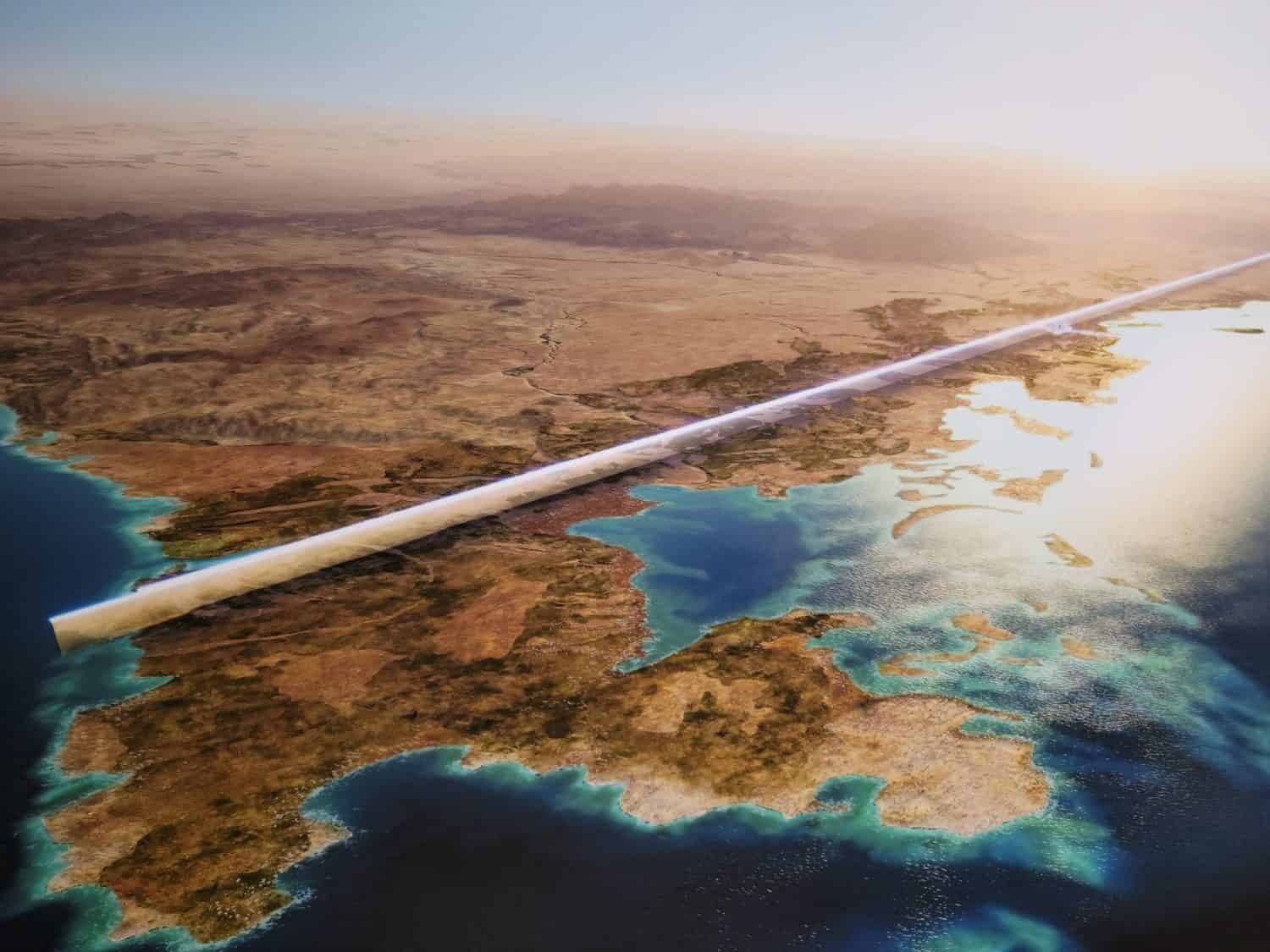The world’s population of 7.9 billion people is expected to grow to 10 billion by the end of the century. Most demographers predict it will level off at that point. Urbanization, education, and better access to birth control are some of the factors that slow population growth as societies develop. In the meantime, how will we house, employ, feed, and entertain an additional 2.1 billion people? Saudi Arabia is betting the answer is not to spread out, but to line up, in a matter of speaking. “The Line” is the Saudis’ concept of a futuristic city in one mega-building, like a skyscraper on its side. Would you live in it? UPDATE: Scroll to the bottom of the article with a video link showing the current state of construction in October 2023.
2 Things About Saudi Arabia
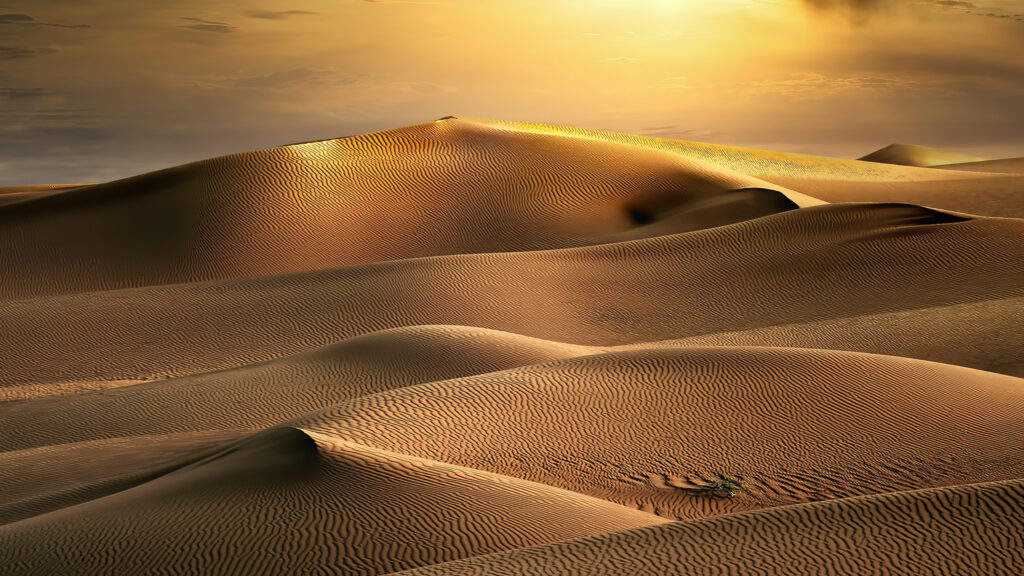
Without oil wealth, Saudi Arabia would be a beautiful but poverty-stricken desert.
©iStock.com/AFZALKHAN M
The Kingdom of Saudi Arabia is famous for two things: Islam and oil. There, in Mecca, Muhammad first began preaching the message of Islam. Within a generation, the whole peninsula was converted. Muslims went on to build a caliphate across North Africa and South Asia. Today, over a billion Muslims worldwide pray in the direction of Mecca and dream of going on pilgrimage there. And many of them look to Saudi Arabia as a leader of the Islamic world.
For non-Muslims, Saudia Arabia became well-known globally known when it started producing oil in 1946. It has the second-largest proven petroleum reserves in the world. The kingdom rakes in an estimated $1 billion a day from petroleum. That gives the Saudis a GDP higher than 81% of the world’s countries.
How Do They Spend All That Money?
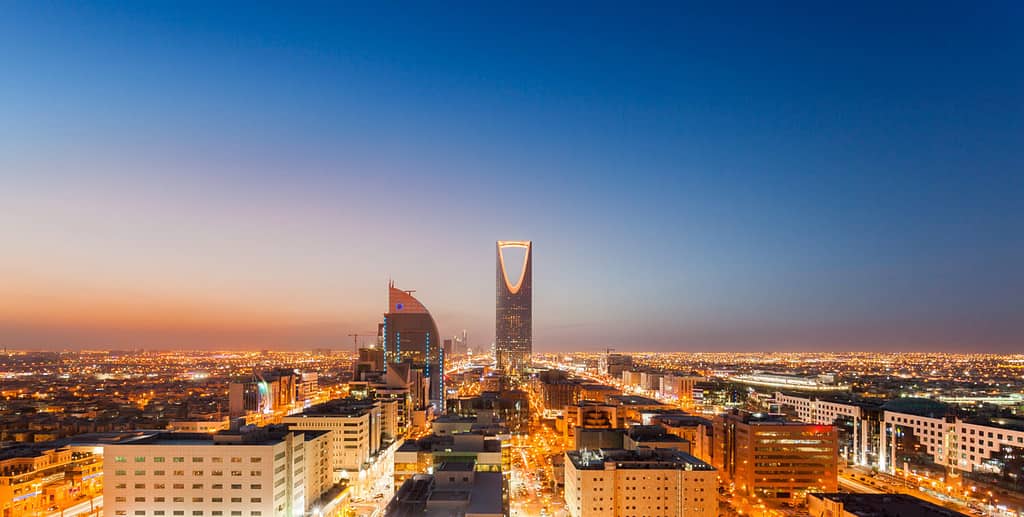
Oil wealth has turned cities like Riyadh into modern, architecturally innovative metropolises.
©KhaledSaad001/Shutterstock.com
Roughly 75% of Saudi Arabia’s government revenue comes from oil. The political and business elite enjoy a lavish lifestyle of palaces, yachts, expensive cars, fine dining, and entertainment. Ordinary people have benefitted as well, though, with free healthcare and education, subsidized energy, and cushy government jobs. The country has also invested in huge infrastructure projects, such as highways, ports, and water desalinization plants. Over six million foreign workers make up 76% of the private workforce in the country. Providing citizens with an easy life helps silence critics of the country’s lack of democracy and poor human rights record.
Neom: A $500 Billion Project
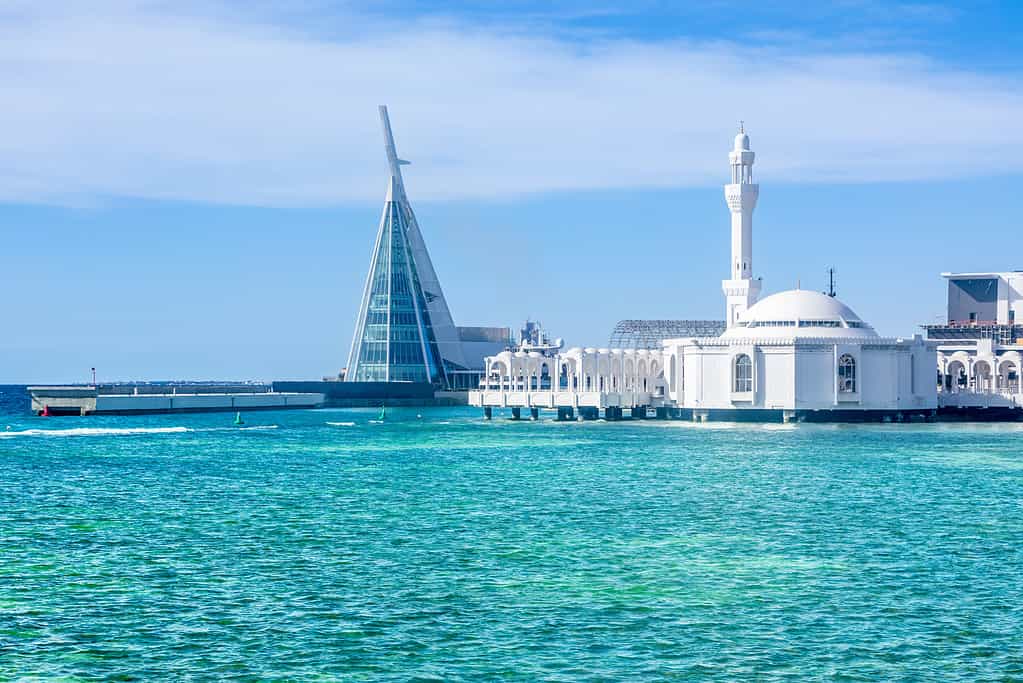
The Alrahmah floating mosque in Jeddah shows how Saudis will construct a floating platform for NEOM.
©Vadim_Nefedov/iStock via Getty Images
“Neom” is the name for a megaproject to develop the northwestern corner of the country, near Egypt, Israel, and Jordan. The name derives from Greek and Arabic roots meaning “new future.” At an estimated cost of $500 billion, the project will include industrial and commercial zones and tourist amenities. But the centerpiece of it all is “The Line,” a high-tech linear city. It’s not just an idea. The project launched in 2017 and is currently under construction, with an expected 2039 completion date.
The Line: A City in One Building
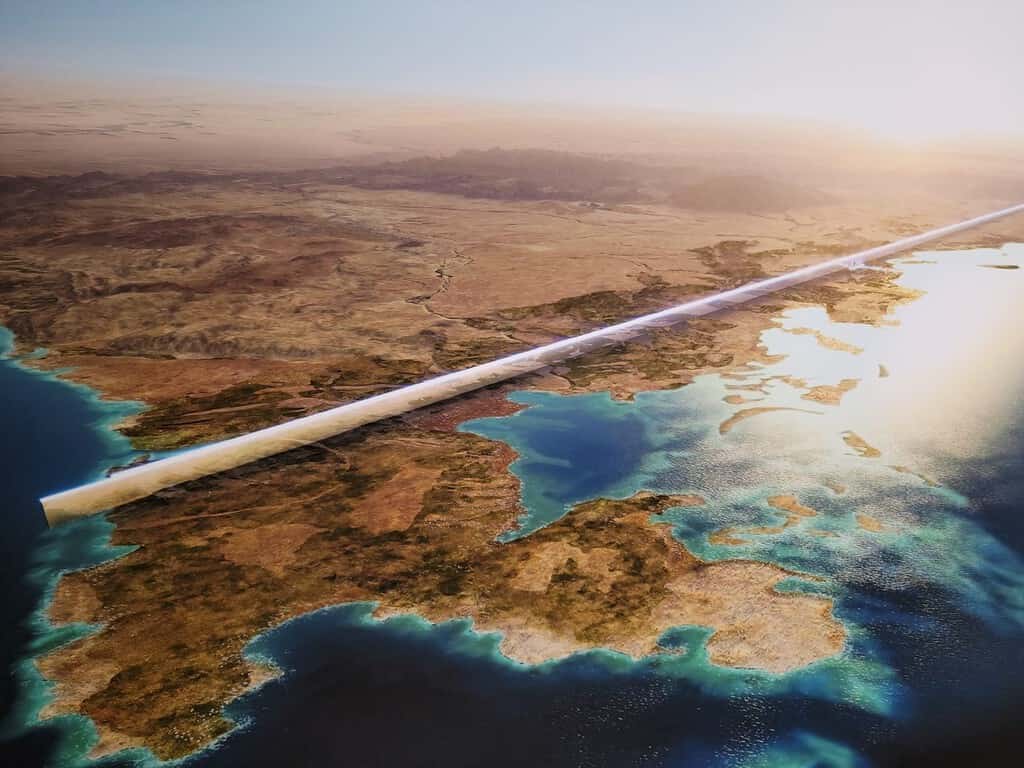
Starting at the Red Sea coast, The Line will stretch 106 miles across the desert to the eastern mountains.
©choi yurim/Shutterstock.com
The Line will be a linear city housing nine million people in one enormous “skyscraper-on-its-side.” It will stretch from the Red Sea coast across miles of desert to the mountains in the east. Consider the astonishing scale of it:
- The single megastructure containing the city will be 106 miles (170 km) long and 660 ft (200 m) wide. If you walked your dog from one end to the other at 3 mph (4.8 kph), it would take you 36 hours to get there! Or you can take a high-speed train for 20 minutes.
- If it were finished today, at 1,640 ft (550 m), it would be the 12th tallest skyscraper in the world.
- This mega-skyscraper’s height will be only 136 ft (41.4 m) shorter than One World Trade Center, the tallest building in the United States (1776 ft, or 541 m).
- The footprint of The Line will be just 13 sq miles (34 sq km), not bad for a city, astonishing for a single building. (Compare that to the 40,000 sq. ft footprint of One World Trade Center, about a hundredth of a mile.)
- The dimensions of The Line will be the equivalent of building nearly 2,800 Trade Centers in a row . . . then two more identical rows of them touching that one!
- The superstructure will enclose about 55.4 billion square feet stacked up 150 stories tall, with a total area of over 1,987 sq. mi. (5,146 sq. km). That’s about three times larger than the land area of London, with a similar-sized population.
Living in The Line
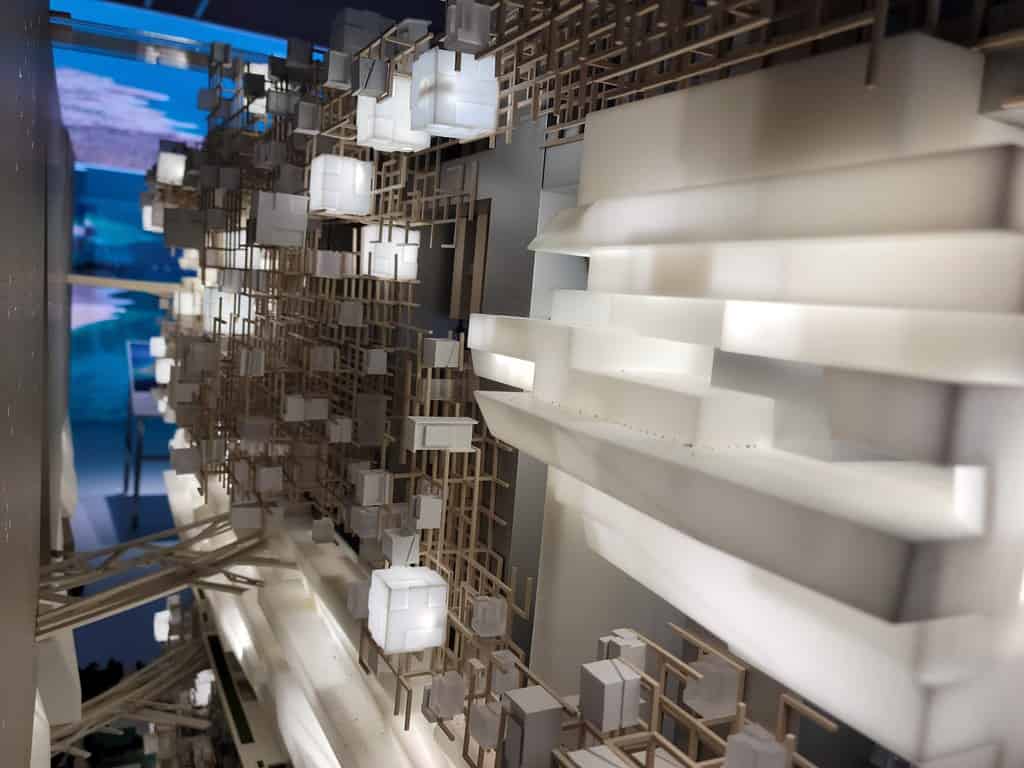
Inside, skyways will connect the two halves of The Line.
©choi yurim/Shutterstock.com
From the outside, The Line will appear to be a shimmering reflective glass wall stretching endlessly to the horizon. Inside, picture something like an enormous shopping mall with housing, offices, and stores on either side. Running down the middle will be a central courtyard with trees, water features, and mass transit. Skyways will connect the two halves of the building. The city will be car-free. Every resident will be within a five-minute walk of basic services and 20 minutes or less by rail from any point.
Robots will perform much of the physical labor: making deliveries, caregiving, logistics, and (cue ominous music) security. Despite Saudi Arabia’s ocean of oil, the city’s power will come from solar and wind power. Saudi Arabia sees this as a model of sustainable development for the world. But it also is part of a strategy to make its own economy less oil dependent.
Utopia or Dystopia?
If you’re a futurist, these plans could make your heart skip for joy. It sounds a lot like living on a spaceship with all your needs provided for. Hopefully, this new city will reveal a more comfortable and resource-efficient way of life. It could also help us develop the strategies we will need to settle other worlds one day.
In the movies, people on spaceships never get to live out their lives in peace. Something always goes wrong. And the same could be true of a mega-project like The Line. No one knows how it will affect the behavior patterns of desert wildlife that can’t get around it. The system will be completely dependent on technology. Hackers, hostile foreign countries, or human error could bring down vital systems. Pandemics might spread more rapidly with so many people within a short distance of one another. The city’s barren location would make it hard to survive outside the walls in the event of an emergency evacuation.
One of the concerning aspects of this new city will be its ability to monitor the lives of its citizens. Saudi Arabia has an abysmal human rights record. Extensive video monitoring, data tracking, facial recognition technology, and the use of security robots all have possibilities for abuse. The design of the city also lends itself to closing off sections of it during emergencies or for security purposes. This might be legitimate at times but would also make it all too easy to crack down on peaceful citizens. If that’s the case, then The Line might be a thrilling futuristic vacation spot, but not someplace you’d want to live.
Update:
See the video below for an update on the progress of The Line, which is well underway.
Thank you for reading! Have some feedback for us? Contact the AZ Animals editorial team.

